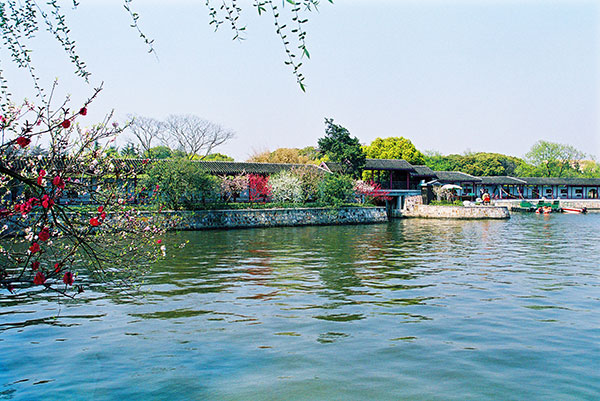This is Wuxi: Classical gardens adorn the city

Li Garden [Photo/lihupark.com]
Li Garden
Li Garden is in Qingqi village on Lihu Lake. The 8.2-hectare garden and surrounding lake are named after Fan Li, a prime minister of the Yue State in the Spring and Autumn Period (770-476 BC).
Fan Li helped the Yue king conquer the neighboring Wu State with the help of Xi Shi, one of the famous Four Beauties of Ancient China. After their success, Fan Li and Xi Shi came to the lake and lived happily ever after in privacy there.
From June to September, the lotus flowers bloom and are a sight to behold.
Plum Garden
Plum Garden was built in 1912 by Rong Chongjing and Rong Desheng, considered the founders of Chinese industry, who wanted to "spread the fragrance" of this land "to the world".
They adorned the Hengshan Mountain with plums and named it Plum Garden.
In 1916, they built a spring in the center of the garden and named it Xi Xin Quan, meaning "a spring to wash people's hearts". The Tian Xin Tai was built in 1914, and is known as the best place in the garden to admire plum blossoms.
Public Garden
Public Garden, known as Gong Hua Yuan in Chinese, was the first modern garden built in Wuxi. In 1905, some local celebrities rebuilt several private estates into a large garden where locals could their leisure time.
The garden is located in today's downtown. It has always been free to enter.
A total of 22 well-preserved cultural relics and historic sites can be seen inside, including many stone inscriptions by famous calligraphers and painters.
Xihui Garden
This garden is an open-air museum, exemplified by Hui Spring and Jichang Garden.
Hui Spring was built during the Tang Dynasty (618-907) and became well known in recent times due to the popularity of the song Moon Reflected on the Hui Spring, which was composed by the blind folk musician Hua Yanjun.
Hua plays the erhu (a kind of two-stringed cello) and beautifully captures the serene atmosphere of this tranquil location.
Jichang Garden was constructed during the Ming Dynasty (1368-1644) and is one of the finest examples of a classical Chinese garden.
Chinese rulers, such as Kangxi and Qianlong, both emperors during the Qing Dynasty (1644-1911), adored this garden and its surrounds.
Qianlong liked the garden grounds so much that he built exact replicas in the Summer Palace in Beijing.

 WeChat
WeChat
 Weibo
Weibo